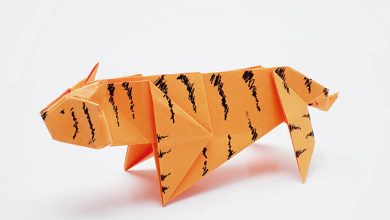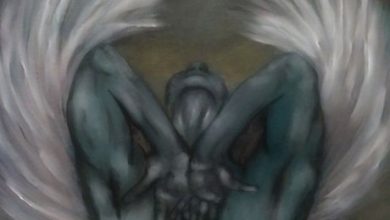Kate Chopin, in her brilliantly written short story, Beyond The Bayou, explores the storyline of a former slave named Jacqueline. Written in 1891, after the American Civil War ended and resulted in the abolishment of slavery, Chopin’s American short fiction is set against the background of Bellissime, the plantation in Louisiana state. First published in Youth’s Companion in 1893, Beyond The Bayou was later included in the author’s collection of stories called “Bayou Folk” in 1894. The real name of the protagonist might be Jacqueline but she is called by everyone on the plantation as La Folle, meaning ‘madwoman’ in French. So this is a story about the thirty-five-year-old, black woman, La Folle, living in the bayou that “curved like a crescent around the point of land”, more than the story about Jacqueline. Through the use of a third-person narrative style, the narrator lets us in on the derivation behind the name La Folle.
In her childhood, as the narration goes, she had been frightened to death, almost “out of her senses”, after seeing the figure of P’tit Maitre, covered “black with powder and crimson with blood”, who had come up for help to the cabin of Jacqueline’s mother after long sharpshooting in the woods, resulting in the sight of terror in the eyes of the child, Jacqueline. This incident eventually gave her the name La Folle. From then on, the childhood terror remained and lived inside her as a trauma, and dwelling in her “solitary cabin”, she becomes afraid to perceive the world beyond the bayou, until she crosses it to save Cheri, the son of P’tit Maitre, who owns the Bellissime plantation.
P’tit Maitre had beautiful daughters too, but La Folle loved more than anyone, his son, whom she called, Cheri. In spite of the fact that the daughters also loved her and enjoyed hearing her “wondrous stories”, Cheri always had a more special place in her heart because “none of them had stroked her black hand quite as Cheri did, nor rested their heads against her knee so confidingly, nor fallen asleep in her arms as he used to do”. All her moments on the plantation, since the birth of Cheri had begun to associate around him. Like the summer for her is “the summer Cheri gave La Folle two black curls tied with a knot of red ribbon”. So when the ten-year-old Cheri disappears into the wood to hunt, upon which follows a “cry of distress”, La Folle quickly reaches near the wood, to her beloved. She witnessed Cheri lying on the floor shot by his rifle. But fortunately, he had only stumbled. Yet, La Folle, as she lifted him up in her breasts, cried for help in a frenzied manner because she had reached the “abandoned field”.
After her childhood accident and the trauma she carries, La Folle was never able to cross the bayou. The regions had long been “removed beyond her sight and knowledge” and were constructed as an unknown region surrounded by morbid fantasies in her imagination. In fact, she even drew an “imaginary line”, a boundary, to separate her from these other regions, and as the story points out, she never crossed the circle of this particular imaginary line dividing her from the other plantations of P’tit Maitre and the narrator informs us, “This was the form of her only mania”. But now, for her beloved Cheri, she had to cross the boundaries, the circle of trauma as her voice was never heard by anyone. She shut her eyes and ran through the “shallow bank of the bayou” and then again through the trees. But La Folle still stood there, afraid to perceive the terrifying, unknown worlds of her imagination coming to reality. Finally, she opened her eyes and laid Cheri in his father’s arms and quickly thumped onto the floor.
At the end of the short story, the readers witness La Folle back to her consciousness and at her home. After sleeping through the night, La Folle got up and in the early morning, she went back to the place situated beyond the bayou, to see her Cheri. Chopin brilliantly describes the once morbid fantastical world in the imagination of La Folle to be the new and now heavenly, “beautiful world beyond the bayou”. The story closes off as the readers witness La Folle waiting patiently for her beloved child to wake up from his sleep.
Beyond The Bayou, significantly highlights the triumph of a child who overcomes her past trauma in her womanhood. Moreover, like several other fictions that revolve around the theme of slavery, does this short story also evoke the accident of childhood terror to an interruptive trauma from slavery that disrupts the self leading to a degeneration of the same? One such fiction that can be brought in is Tori Morrison’s novel Beloved which explores the theme of slavery revolving around the protagonist, Sethe. Although, in the novel, Sethe is no longer a slave, her past memories of being a slave haunt her throughout the storyline affecting her mentally. In other words, Sethe becomes confined to her past traumatic experiences in her present life, eventually leading to the loss of her ‘self’ and her identity. Sethe is only able to move past the interruptive stage of her past memories when she confronts and responds to these horrifying memories. As a result, at the end of the novel, Sethe regains her true self.
In Chopin’s short story as well, La Folle’s childhood terror can be viewed as parallel to the psychological trauma of her past suggestive of the time during her slave days. Such presence of an interruption that disrupts the forward pulse of life of La Folle is expressed in the short story through the use of colors that put in effect the technique of symbolism and imagery. The short story takes place in a span of a Saturday afternoon till the next morning. Within this, at the beginning of the short story, the narration plays constantly with the colors red and black. As the narrator informed us, the colors that described P’tit Maitre on that late evening when he appeared in the cabin that belonged to La Folle’s mother, are of course, “black with powder and crimson with blood”. As a result, these two colors struck in the eyes of the little child La Folle as symbolic of horror and fear. The colors red and black then appear at the time when the readers are told that Cheri had given two black curls which had been tied with a red ribbon. It is vague here what the author is connoting at this point in evoking these colors as a gift given to La Folle by Cheri.
As we move along, the next moment that we witness the play of these colors is during the triumph of La Folle, wherein right before she safely hands Cheri to his father and when she crosses beyond the bayou, the description goes like this, “Her eyes were bloodshot and the saliva had gathered in a white foam on her black lips”. In other words, if the colors of red and black represented fear and terror in her childhood, at this moment these colors are transformed to define her triumph in crossing the border that evoked geographical confinement that tied her to her childhood trauma. Moreover, the writer clearly emphasizes the parallel between these two incidents as the story highlights, “Then the world that had looked red to La Folle suddenly turned black,—like that day she had seen powder and blood”.
Similar to the match cut in films that uses a cut to move from one shot to another where the composition of the two shots are matched and juxtaposed by action or subject and subject matter, here as well, the writer skillfully completes in juxtaposing these two incidents on the level to showcase the transformation from one incident that evoked her persistent psychological trauma to overcoming and triumphing above this to construct a regenerated self of La Folle. A transformation as strong as this can be clearly seen in the writer’s use of vivid imagery to portray the world beyond the bayou. As the narration goes:
“She found herself upon the border of a field where the white, bursting cotton, with the dew upon it, gleamed for acres and acres like frosted silver in the early dawn”.
Moreover, with the use of vivid imagery, the writer makes sure to bring in vivid fascinating, and evocative colors to represent the new world away. From “thousand blue violets that peeped out from green, luxuriant beds” to beautiful roses and magnolias, the world beyond the bayou is breathlessly beautiful.
The short story ends with La Folle waiting patiently as she waits for her beloved Cheri in the world beyond the bayou, evoking the significance of the title, with “a look of wonder and deep content crept into her face as she watched for the first time the sun rise upon the new, the beautiful world beyond the bayou”, connoting the idea of awakening and resurrection in the life of the protagonist, La Folle.



